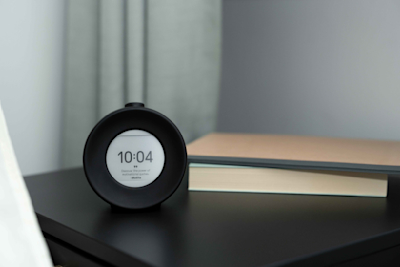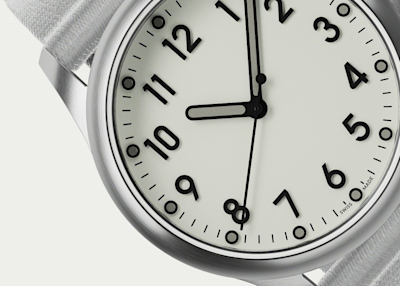
What Does the WHO Say About Your Mobile Phone?
When discussing the subject of mobile radiation, it’s crucial that we base our knowledge on the authority of scientists and well-known associations. The reason for this is that there are still a lot of people who are not convinced that radiation emitted from electronic devices might harm their health. We have already written about the most relevant scientific studies which attempt to prove the long-term health effects of being exposed to radiation.
The World Health Organization have a plethora of evidence to support the notion that mobile radiation could be harmful. In 2011, they stated that mobile phone overuse can increase your risk of cancer. They also qualified mobile radiation as a category 2B carcinogenic hazard, this category also contains substances such as chloroform and engine exhaust.
Why are the opinions of the WHO so important?
The World Health Organization (WHO) are a specialist agency of the United Nations concerned with international public health. The WHO was established in 1948 and since then their constitution has been signed by over 60 countries worldwide. They are one of the best known and the largest organizations relating to public health.
Their priorities cover a wide range of subjects, such as food security, occupational health, substance abuse and particular diseases, such as AIDS, Ebola and Malaria. The WHO headquarters is based in Geneva, Switzerland but they have offices all over the world, in almost 150 countries. Something to consider is that the WHO staff work side by side with governments and other partners to ensure the highest attainable level of health for all people.[1]
The World Health Organization works with the best doctors, scientists and experts worldwide. That’s why their opinions are important – they are trustworthy and proven.
We have another post about the WHO here, it’s about children and screen time.
Mobile radiation is carcinogenic according to the WHO.
Before making a decision as to whether or not mobile radiation is carcinogenic, the WHO specialists reviewed studies on cell phone safety. There were several results which found a link between mobile phone usage and the development of glioma or acoustic neuroma.
For example, experts based their opinions on the INTERPHONE study (Brain tumor risk in relation to mobile telephone use: results of the INTERPHONE international case–control study, International Journal of Epidemiology, 2010), Hardell et al. study (Meta-analysis of long-term mobile phone use and the association with brain tumors, International Journal of Oncology, 2008) and research of the National Toxicology Program (Cell phone radiofrequency radiation studies, 2009, accessible online).[2]
The team of 31 scientists concluded that this was sufficient enough evidence to consider mobile phones as hazardous to human health. One of the doctors, Keith Black from Los Angeles, said that we need more time to be sure what kind of problems mobile radiation could cause. “Most environmental factors take several decades of exposure before we really see the consequences,” he added.[3] In the future we may discover that mobile radiation is as harmful as smoking cigarettes or being exposed to asbestos. A few decades ago, it was not obvious that ‘smoking kills’.
Mobile radiation is classified as possibly carcinogenic (group 2B) but that does not necessarily mean it will cause cancer among average mobile phone users. It may increase the risk of developing cancer because there is a mechanism in cordless phones which could cause specific types of cancer. Scientists working for the WHO have highlighted the need to provide more research on mobile phone safety, especially with long-term studies.
What does it mean when we say that mobile radiation is classified as part of the ‘2B group’?
This classification was created by The International Agency for Research on Cancer (IARC), which is an intergovernmental agency forming part of the World Health Organization. It is divided into five main categories, 1, 2A, 2B, 3 and 4. They are, respectively:
Carcinogenic to humans (1); Probably carcinogenic to humans (2A); Possibly carcinogenic to humans (2B); Not classifiable as to its carcinogenicity to humans (3); Probably not carcinogenic to humans (4).
Radiofrequency electromagnetic fields, such as, but not limited to, those associated with wireless phones belong to 2B. In this group there are almost 300 different agents, including but not limited to lead, nickel, gasoline, aloe vera (whole leaf extract), kava extract, refractory ceramic fibers and diesel fuel. On this list we can also find some occupational risks, such as working as a firefighter or in a laundromat.
According to the subject of radiation, there are magnetic fields (extremely low-frequency) and radiofrequency electromagnetic fields listed. In group 2A, for example, there are types of red meat, hydrazine and even drinking very hot beverages (at above 65 °C), in group 1 ultraviolet radiation, asbestos, sulfur mustard, arsenic, ethanol in alcoholic beverages, tobacco smoking and solar radiation are distinguished.[4]
Electromagnetic field (EMF) was added to the list in 2011 but even before that the WHO decided to educate people on the possible adverse health effects of being exposed to this kind of radiation. In 1997 they launched The EMF Project, which is responsible for radiation protection. Electromagnetic fields are the most common and fastest growing environmental influence and The EMF Project confirmed that anxiety and speculation are spreading.
This project is about providing a coordinated international response to concerns about the possible health effects of exposure to EMF and assessing the scientific literature to develop a status report. If you are interested in more information about this project, you can check outthe official website of The EMF Project. We have also created an article listing some of the best EMF organizations in the world.
What does the WHO say about mobile phones?
The WHO defined mobile phones as low-powered radiofrequency transmitters, operating at frequencies between 450 and 2,700 MHz with peak powers in the range of 0.1 to 2 watts. Mobile phones are tested in laboratory conditions so during measuring they are kept at a distance from a phantom body.
When tests are provided directly to the head, mobile phones emit even higher levels of radiation. Moreover, mobile phones are operating at higher frequencies if they are connected to WiFi or mobile Internet. The organization said that exposure to radiofrequency (RF) fields emitted by mobile phones is generally more than 1,000 times higher than from base stations.[5]
The WHO educates people about safe mobile phone usage. It is advised not to use a mobile phone in direct contact with the body but to keep a distance of approximately 30 to 40 cm. It is better to text rather than talk. These are very accurate tips. The WHO is serious about the possible links between mobile radiation and developing cancer. As the WHO scientists have stated: “Even a small increase in the incidence of adverse effects on health could have major public health implications”.[5]
This is due to the fact that enormous numbers of people use mobile phones every day, so the risk group is immense. The WHO are promoting further research on mobile radiation, especially if conducted with the younger generation because children nowadays are exposed to EMF on a daily basis. This means that they get larger doses of radiation over the course of their lifetimes. The organization supports the COSMOS study[2] which will be developing for at least 20 years, covering the subject of long-term exposure to radiation.
It’s good to know that an organization with such a reputation supports the idea of responsible mobile phone use. They advise limiting radiation exposure for your future health and well-being. Only recently the WHO issued a few monographs on radio frequency radiation which summed up the latest research (the last one was published in 2014).[6] The EMF Project is now worldwide and you can check which countries have already joined the legislation changing initiative.[7] This, in our opinion confirms that mobile radiation is a significant issue which needs to be investigated.
Is there anything you’d like to add, have we missed anything? If you’re interested in sharing your experiences with us or writing a guest post for us, send us an email via hello@mudita.com!
Please feel free to get in touch via social media (send us some photos or videos too), you can find us on Facebook, Twitter and Instagram, let’s connect! To learn more about Mudita, take a look at our website and our other posts.
If you enjoyed reading this article, please share and recommend it!
Related stories

Introducing Mudita Mindful Design
Mudita Mindful Design is our in-house framework for building clear, intentional E Ink interfaces. Learn our design principles for calm and mindful technology.

The Power of Motivational Quotes
Motivational quotes boost focus, resilience, and positivity. Discover their impact and how Mudita Harmony’s Custom Quotes bring meaning to daily life.

Swiss Precision Meets Minimalist Design
Mudita Radiant combines Swiss craftsmanship and minimalist design. Powered by the Sellita SW200-1 Elaboré, it’s a timeless, practical field watch.
If you'd like to receive the best stories from our blog, keep up to date with our progress and get notified about our product releases and special discounts.